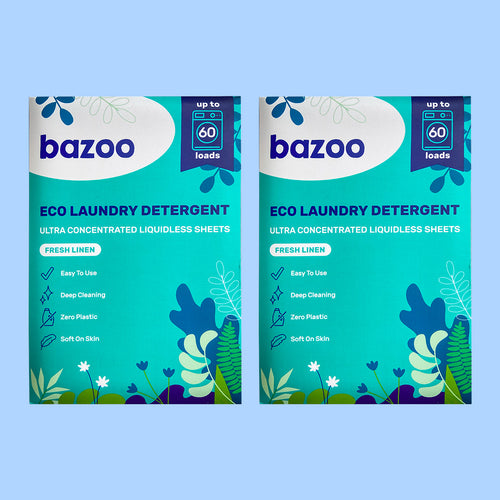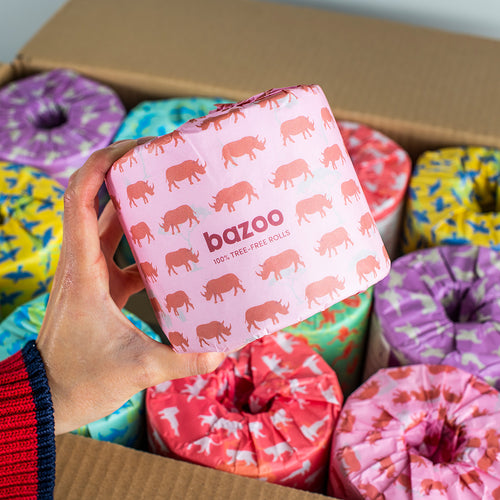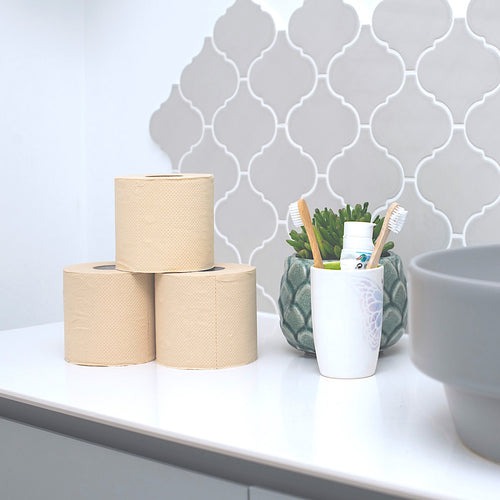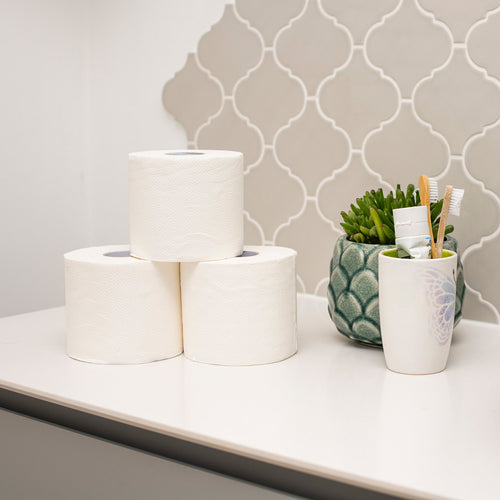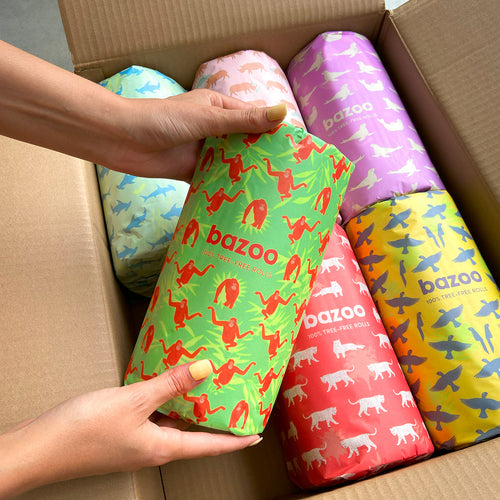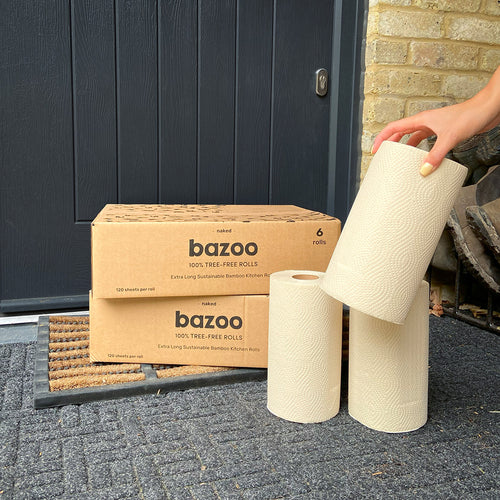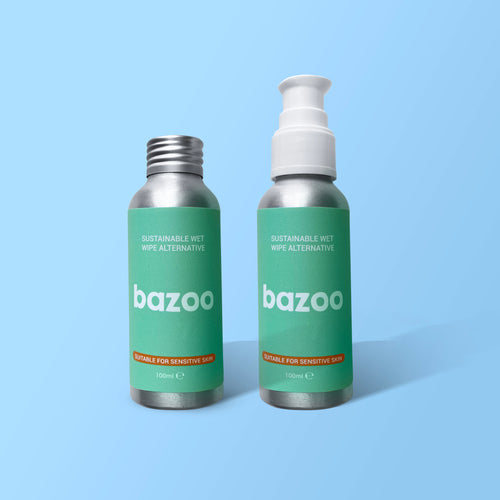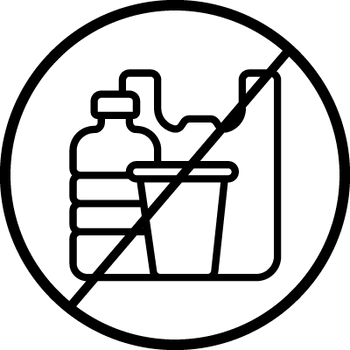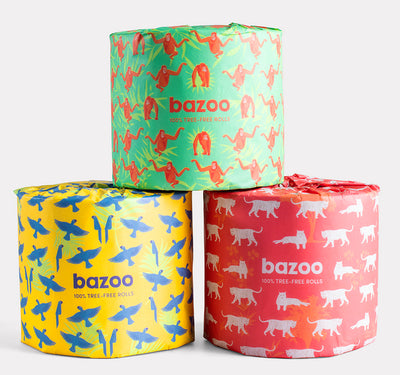The exact difference between bamboo and recycled paper is a hot debate and one that is often queried for good reason. The Bazoo team has done their research and dug deeper into the hardcore facts of the difference between bamboo and recycled toilet paper.
Despite recycled toilet paper being a massive improvement from regular toilet paper made from trees (using 50% fewer carbon emissions to be exact), bamboo is still the winner! Here are the results and the reasons why bamboo holds the top spot for sustainability in the battle of bamboo vs recycled toilet paper.
1. Bamboo toilet paper uses 35% fewer carbon emissions than recycled toilet paper
The Carbon Footprint Company managed to calculate the exact carbon emissions released per sheet of toilet paper for recycled vs bamboo. The results are in! As you can see below, the carbon emissions for a sheet of bamboo toilet paper is 0.6g compared to 1.0g for a sheet of recycled toilet paper. The fewer carbon emissions produced by bamboo toilet paper are due to the large amounts of heat required in changing one product into another in the process of recycling.

(Credit: The Carbon Footprint Company)
2. Zero chemicals are used in bamboo toilet paper
Due to bamboo’s naturally hypoallergenic and antibacterial qualities that are found in the natural raw form of the bamboo grass, there are zero chemicals used in its fermenting or manufacturing process. Unfortunately, the same can’t be said for chemicals used in the manufacturing of recycled toilet paper. Due to the nature of transforming one product into another, many chemicals are used to successfully deliver toilet paper on the other side!
3. Zero BPA is used in bamboo toilet paper
BPA stands for bisphenol A, which is an industrial chemical used to make certain plastics and resins. Recycled toilet paper more often than not involves the use of BPA, in comparison to zero BPA being used in the majority of bamboo toilet paper. BPA is an agent to look out for when looking into alternatives for toilet paper, whether it’s recycled or made from bamboo!
4. Recycled toilet paper often uses chlorine bleach
There is zero chlorine bleach used in most bamboo toilet paper, however, in order to get recycled toilet paper to appear white in colour (or even a light beige colour), chlorine bleach is normally used in order to control the colour of the end product. During the recycling process, the previous items that get recycled into toilet paper could be of any colour and therefore heat and chlorine bleach of some sort are most often used to give the recycled toilet paper its final look!
5. Bamboo toilet paper is strong but also luxuriously soft
Bamboo toilet paper is strong and soft, whereas when paper is recycled over and over again, it begins to lose its soft quality and becomes much rougher. Materials can only be recycled so many times and after much bleaching, heat and other various chemicals, the recycled paper loses its great quality and soft appeal. Not to mention the fact that bamboo toilet paper is naturally hypoallergenic and antibacterial in its natural form.
P.S If you are looking for a BPA-free, zero-plastic, zero chlorine-bleach bamboo toilet paper alternative, check out Bazoo! And remember that recycling materials is a great alternative (Bazoo love using recycled wrappers and cardboard boxes) and a big step in the right direction, it’s just that bamboo is the stronger sustainable option!
Be sure to check out these great reviews declaring Bazoo the #1 toilet paper here and here! We are ecstatic to get the top spot on both – so what are you waiting for? Try our bamboo toilet paper today!
